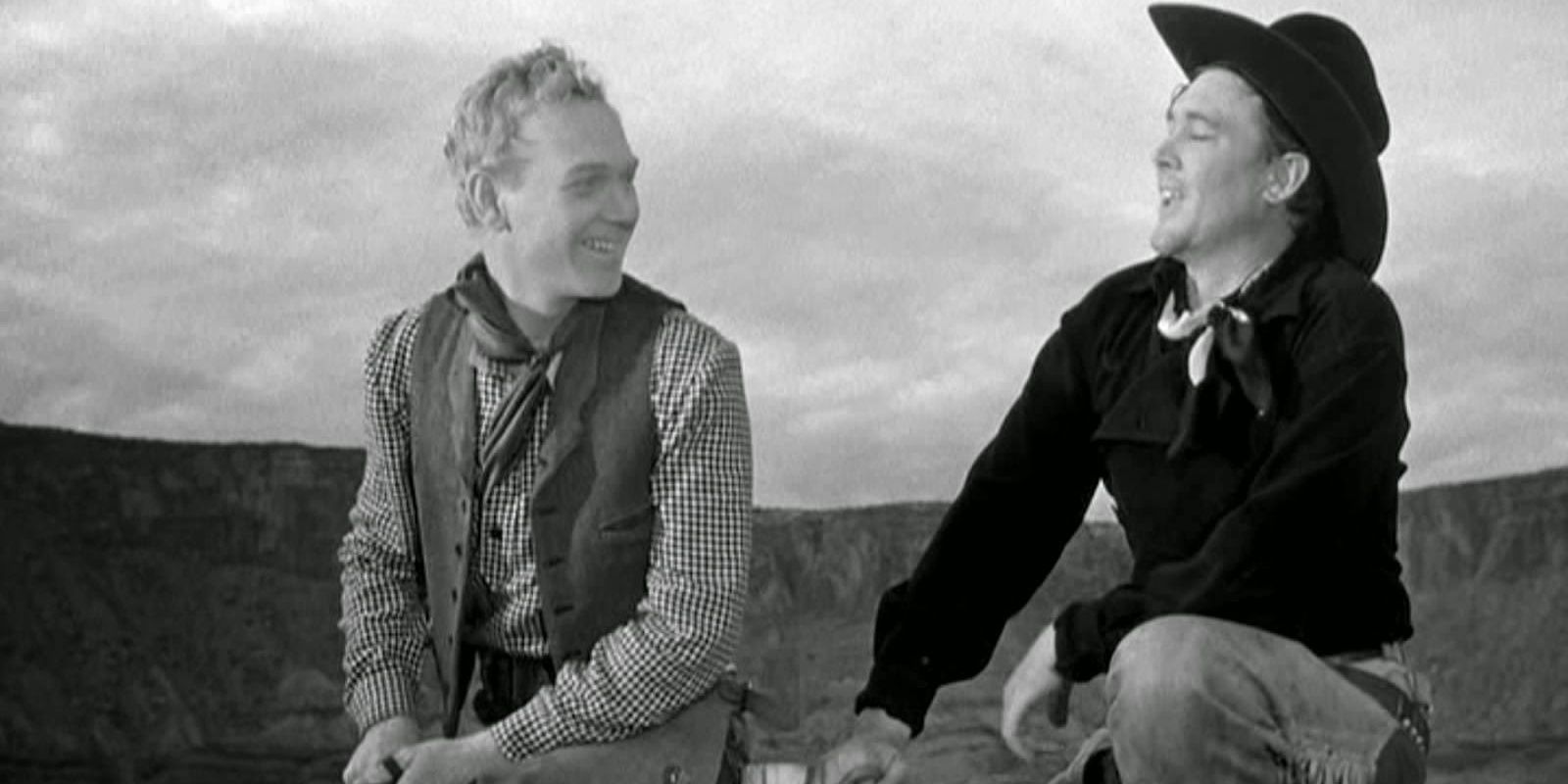With numerous credits in classic Western films, many of which are celebrated as some of the greatest ever produced, John Ford has firmly established his cinematic legacy within this iconic genre. While films like The Searchers and Stagecoach are often hailed as his masterpieces, another significant work from 1950, Wagon Master, deserves recognition as well. Upon its initial release, Wagon Master underperformed at the box office and garnered mixed reviews from critics, likely due to its departure from the conventional Western formula that Ford had previously popularized and its absence of major star power. However, this film truly embodies Ford?s most subtle artistic expressions, showcasing his unique vision for storytelling.
Rather than relying on action-packed sequences, Wagon Master captivates viewers with its rich atmosphere and the deep sense of camaraderie portrayed among its characters, creating an almost spiritual exploration of the new frontier. The film is a remarkable study in restraint, presenting a profoundly intimate and lyrical narrative centered around survival and faith. Throughout this cinematic journey, we witness Ford’s enduring fascination with community and the strength of human resilience against the challenges of nature, elements that are sometimes overshadowed in his more famous Westerns featuring gun-slinging heroes and epic confrontations. Filmed in the stunning landscapes of Utah, this Western features an authentic folk-inspired soundtrack and breathtaking visuals that transform the film into a true visual poem. Wagon Master stands out as one of Ford’s most unadulterated works, illustrating his ability to draw grandeur from simplicity.
John Ford’s profound fascination with communities is a recurring theme that resonates throughout his filmography. This idea can be traced back to his earlier works, such as the 1939 classic Stagecoach, yet it often gets overshadowed by more dominant elements like intense storytelling, star-studded casts, and action-centric plots. In Wagon Master, Ford makes this theme overtly evident, as he opts for a gentler narrative approach that places less emphasis on a central storyline or individual character arcs. Deliberately shunning Hollywood stars in favor of lesser-known actors, he constructs a narrative that follows a community of Mormons, primarily portrayed by stock actors, who are led by two horse traders, Ben Johnson and Harry Carey Jr., as they embark on a quest for a new home in the uncharted territory. Along their journey, they encounter bandits and Native Americans, typically portrayed as adversaries in conventional Westerns. Together, these diverse groups unite to forge a community that collaborates towards a shared goal.
Through the lens of Wagon Master, we gain insight into Ford?s artistic sensibilities and his deep desire for harmony amidst chaos. One particularly striking scene features Ben Johnson’s character, Travis Blue, as he confronts a group of Native Americans who chase him back to the Mormon wagon train. Instead of the anticipated violent confrontation, Wagon Master diverges from expectations, presenting a scene where both groups engage in a peaceful dialogue. In a remarkable display of goodwill, the Native Americans even invite the Mormons to partake in their sacred ceremony. This moment transcends mere storytelling; it illustrates Ford?s commitment to community building. Wagon Master serves as Ford?s vision of the West?an expansive canvas for societal idealism, where the genre?s vast landscapes symbolize the limitless potential for unity among diverse groups during challenging times. This narrative choice highlights his belief that even traditional adversaries can overcome their differences to collaborate towards a common purpose, redefining the frontier as a space for cooperation rather than conflict.
Experience ‘Wagon Master’ as a Visual and Cinematic Poem of the Old West
The film provides a profound exploration of the hardships faced by pioneers as they navigate the unforgiving terrain of the Old West, contending with challenging rivers, vast deserts, and treacherous mountains, alongside human adversaries. The sweeping landscapes serve as characters in their own right, with each frame enhancing the visual beauty that unfolds before the viewer. While the film may lack the high-octane action typical of its genre, it compensates with the stunning and sublime grandeur of the American landscape. Ford?s cinematographic techniques, featuring long, uninterrupted takes, allow audiences to fully appreciate the rhythm of the characters’ journey. His cinematography highlights the stark dryness of the desert, the dangers of river crossings, and the breathtaking stars that illuminate the endless plains. This visual poetry is further enriched by the film?s folk-inspired score, masterfully crafted by Richard Hageman and beautifully performed by the Sons of the Pioneers.
Another remarkable aspect of the film is Ford?s innovative narrative structure, which departs from the traditional three-act format, opting instead for a multifaceted storytelling approach that encapsulates the experiences of various characters while maintaining a cohesive narrative for the entire group. Each character follows a distinct journey, yet none emerges as the conventional hero. Wagon Master reflects Ford’s introspective side, capturing the simplicity and challenges of life on the frontier.
Born out of the creative vision of Ford’s son and screenwriter Patrick Ford, Wagon Master was conceptualized during the production of Ford’s other acclaimed film, She Wore a Yellow Ribbon. This black-and-white masterpiece stands out as a Western that prioritizes introspection over spectacle, revealing the director’s deep-seated desire for harmony within a genre often characterized by discord.
Wagon Master is currently available for rent on Amazon in the U.S.
Rent on Amazon







